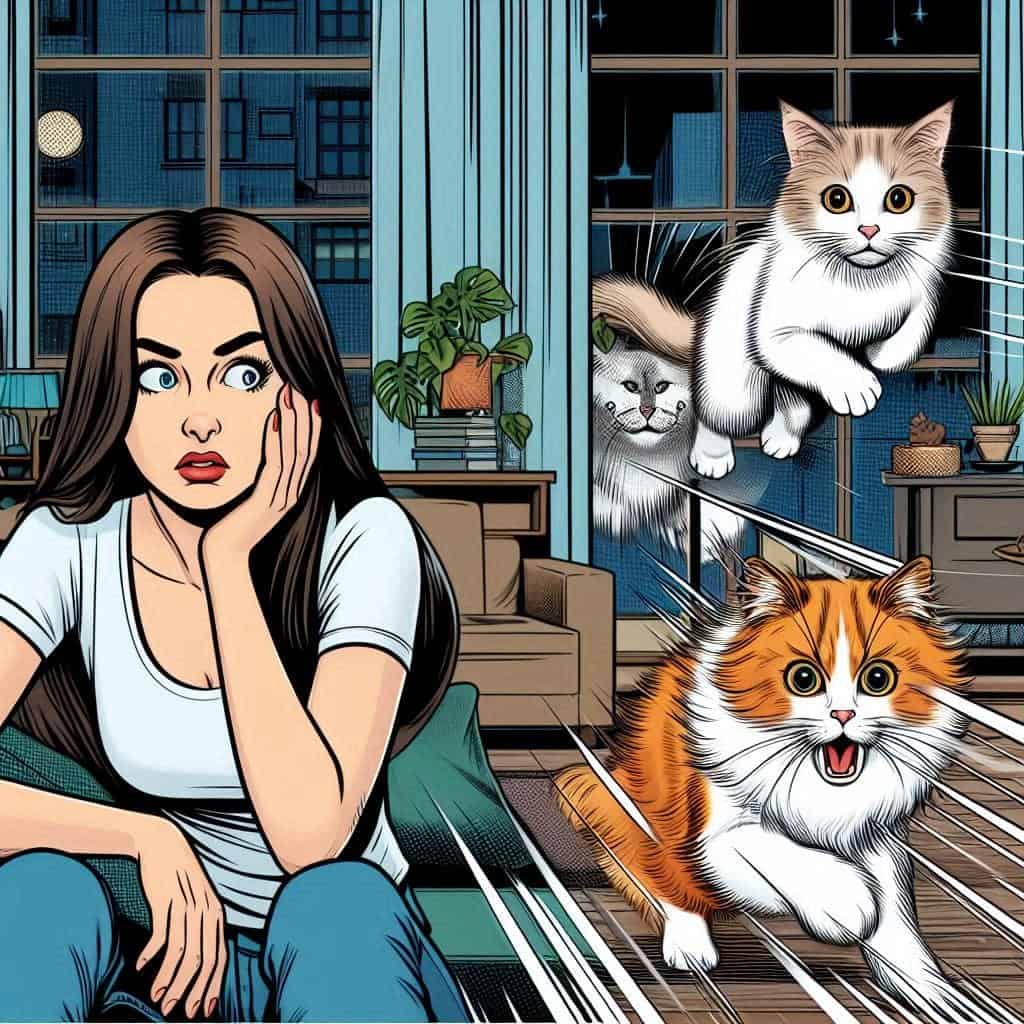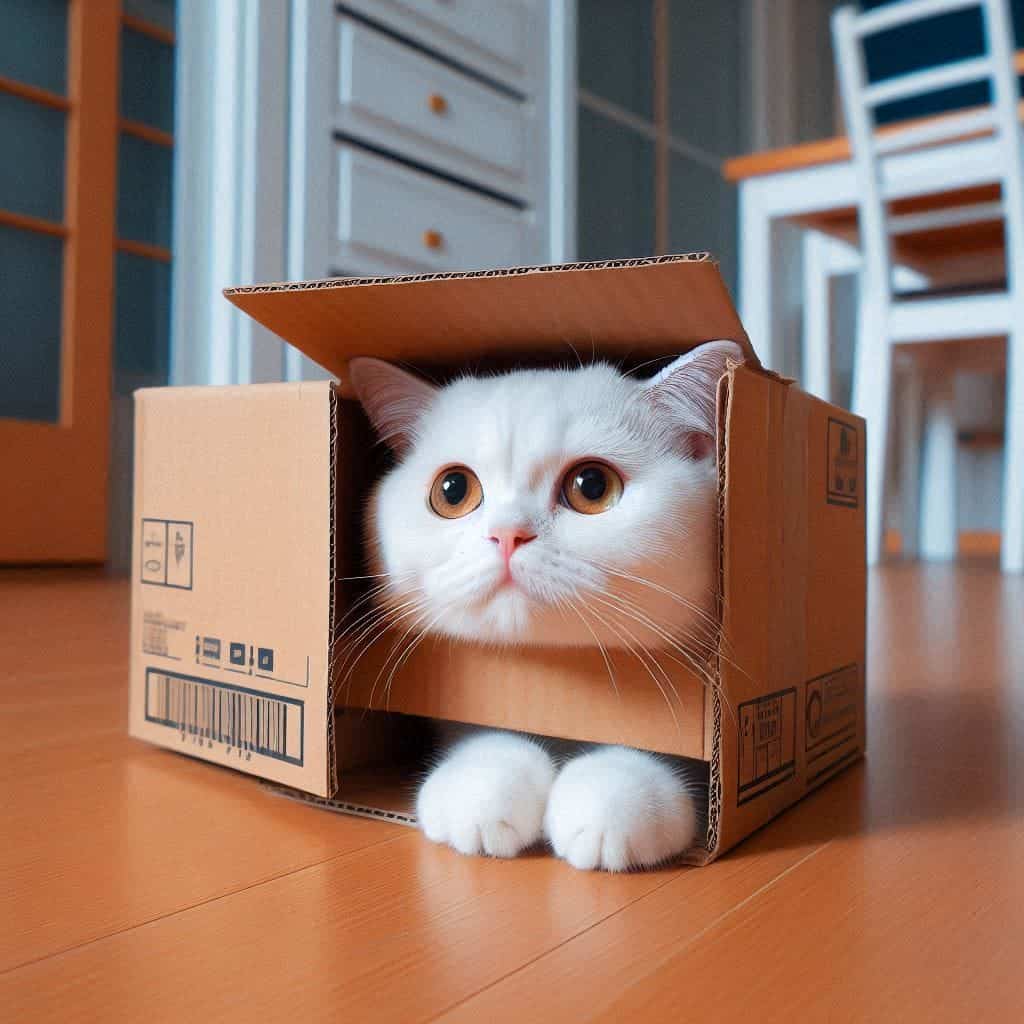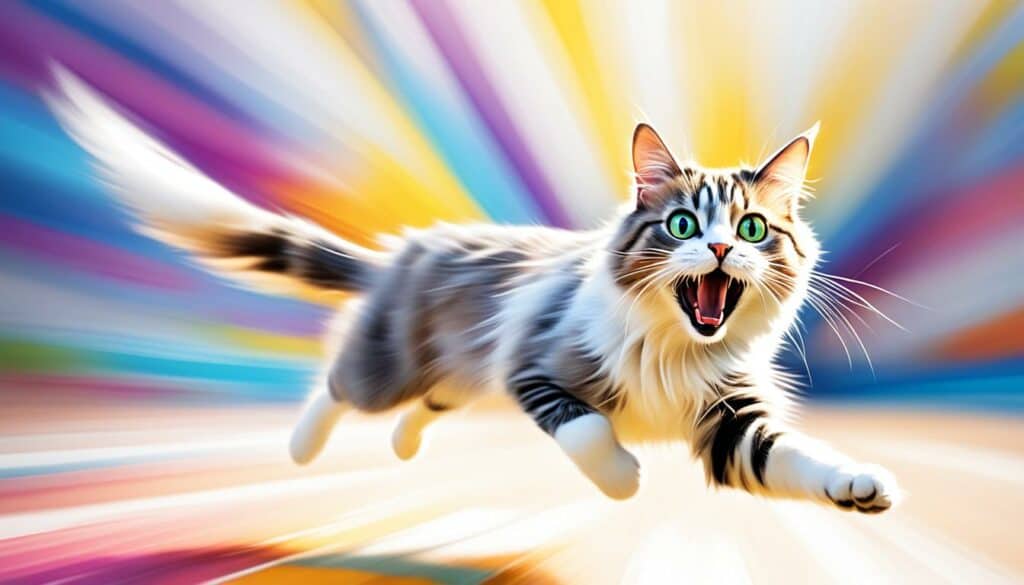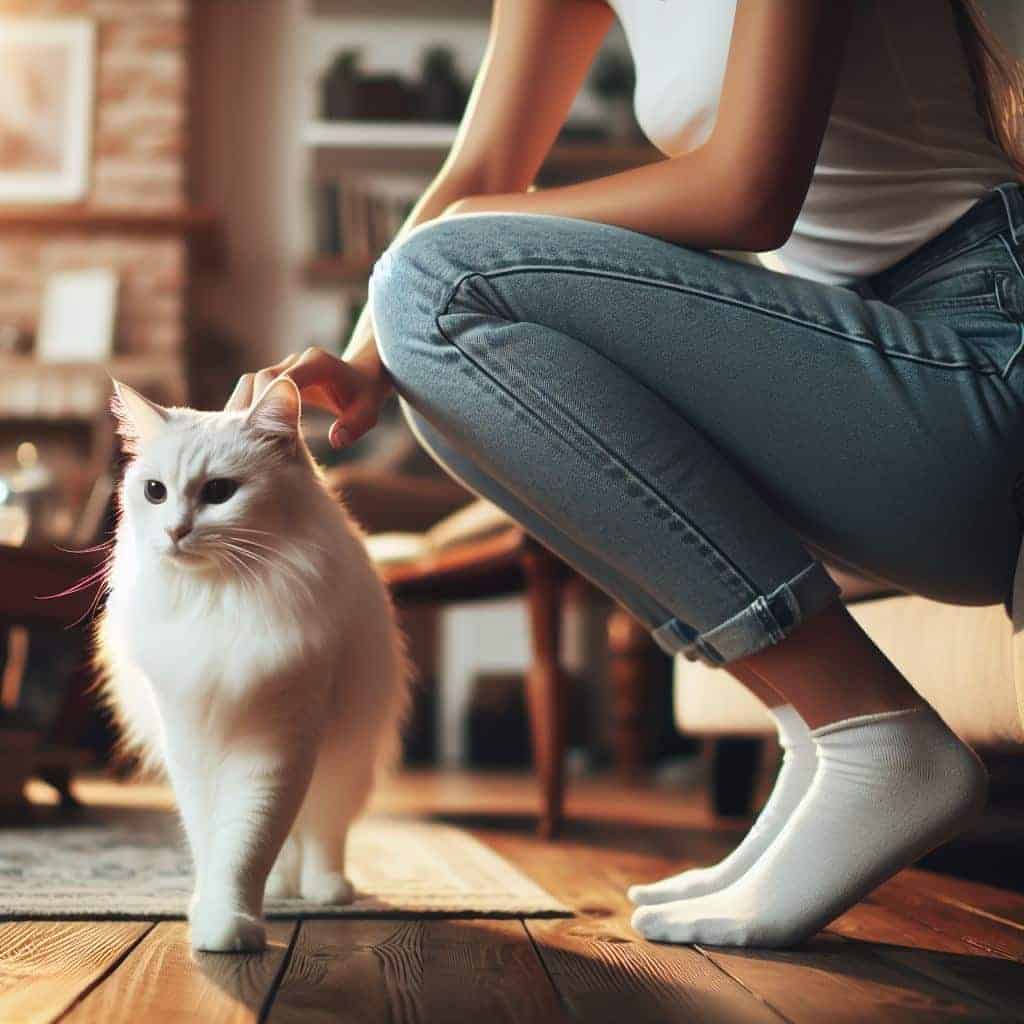As a cat owner for many years, I’m endlessly fascinated by the quirky things that cats do. They can go from being hilariously funny to completely confusing in an instant. But here’s the thing: grasping these strange behaviors cats exhibit isn’t just for fun—it’s vital for building a strong bond with your cat and addressing any issues before they worsen.
Why is it Important to Understand Cat Behavior?
Forging a Stronger Bond
Recognizing and appreciating your cat’s unique behaviors helps you connect with them on a deeper level. It also allows you to anticipate their needs and provide them with a safe and comfortable environment. Understanding cat behavior can also help prevent potential health issues.
Cats are known to be masters at hiding pain, making it difficult to detect any signs of illness or discomfort. When you familiarize yourself with your cat’s typical behavior, you’ll be more likely to notice any changes that could indicate a health problem and seek veterinary care sooner rather than later.
Taking Proactive Measures
Differentiating between normal and problematic behaviors enables you to take better care of your cat’s well-being. For example, excessive grooming could be a sign of anxiety or an underlying skin condition.
If you notice your cat engaging in this behavior excessively, you can address the issue by providing environmental enrichment or consulting with a veterinarian. Understanding your cat’s behavior can also help you create a safe and stimulating environment that meets their needs, reducing the likelihood of destructive behaviors.
In this article, we’ll be exploring 10 of the funniest and strangest behaviors that cats exhibit.
The Zoomies Phenomenon: Decoding Cats’ Bouncing Off the Walls Behavior

Ever caught your cat darting around the house like a furry tornado? These sudden bursts of hyperactive behavior, often referred to as cat zoomies, leave many cat owners bewildered yet amused. This playful nature of cats is more common than you might think.
Why Do Cats Get the Zoomies?
Cats experience these intense bouts of energy due to their innate hunting instincts. In the wild, cats need to be agile and quick to catch prey. Even our domesticated feline friends retain this instinctual need for physical exercise, leading to spontaneous sprints around the house.
Linking Zoomies to Hunting Instincts
- Predatory Behavior: When cats engage in zoomies, they mimic the high-energy bursts required for hunting. It’s almost as if they are answering the call of the wild.
- Natural Exercise: Indoor cats especially need an outlet for their pent-up energy. The zoomies provide a natural way for them to stay active and healthy.
Tips for Managing Cat Zoomies
Channeling your cat’s energy during these episodes is essential for their safety and your sanity:
- Interactive Toys: Use toys that mimic prey, such as feather wands or laser pointers, to focus their energy.
- Scheduled Playtime: Engage in regular play sessions to help burn off excess energy.
- Safe Environment: Ensure there are no fragile objects or hazards in areas where your cat typically zooms around.
- Understanding Attack Mode: If your cat tends to get aggressive during these hyperactive moments, it’s important to know how to handle them.
Once you can understand and accommodate such quirky behavior, you can ensure a more fulfilling life for your cats at home. For more insights into peculiar cat behaviors, check out our article on why cats don’t cover their poop. If you’re also curious about why cats throw up food, we’ve got you covered with another informative piece.
Head Bumping or Bunting: The Ultimate Display of Feline Affection
Have you ever experienced the gentle bonk of your cat’s head against you or other objects? This behavior, known as head bumping or bunting, goes beyond seeking attention; it’s actually a profound expression of love and trust in the world of cat communication.
When a cat engages in head bumping, it signifies a deep emotional bond. It’s their way of saying, “You’re part of my family.” Cats have scent glands around their cheeks and forehead, so when they bunt, they’re marking you with their scent and claiming you as one of their own.
Bunting isn’t just about affection; it’s also a practical means for cats to create a familiar environment. When they rub their scent onto objects and people, cats establish a comforting territory marked by their unique smell. This helps them feel secure and at ease in their surroundings.
These small gestures build an unspoken yet profound bond between cats and their humans.
Understanding these behaviors can help foster a deeper connection with your cat, ensuring they feel loved and secure every day. For more insights on understanding your feline friend’s behaviors, check out our article on what to do when cats sneeze frequently. Uncover key remedies and causes, plus how to help your sneezy feline at home with these helpful tips and treatments.
The Chattering Symphony: Why Do Cats Make Funny Noises When They See Prey?
Ever noticed your cat making amusing chattering noises while staring intensely at birds or squirrels through the window?

This unique vocalization can leave many cat owners puzzled. Cats possess an intricate set of predatory instincts. When they spot potential prey, such as birds or squirrels, their excitement and frustration combine, leading to chattering. This sound is a mix of rapid teeth chattering and soft vocalizations, reflecting their inner struggle between the desire to hunt and the inability to do so from behind a glass pane.
Why Do Cats Chatter?
- Predatory Instincts: Chattering is believed to be an expression of a cat’s predatory instincts. It mimics the killing bite they would use on small prey, a behavior rooted in their wild ancestors.
- Excitement and Frustration: Observing prey without being able to catch it can be incredibly frustrating for them. This mixture of emotions often triggers the chattering response.
- Other Intriguing Feline Behaviors: Chattering is just one of many puzzling behaviors exhibited by cats. If you’re interested in exploring more about these behaviors, you may want to check out this article on 13 Strange Cat Behaviors Explained. It provides insights into various enigmatic feline behaviors that will help you understand your furry friend better.
Understanding these behaviors enriches our bond with our feline friends and helps us appreciate their complex nature. By recognizing the signs of excitement and frustration in our cats’ body language, we can provide more engaging environments to satisfy their hunting instincts safely indoors.
Cats Chewing on Weird Things – Boredom Buster or Dental Hazard?
Cats are known for being curious creatures, but sometimes their curiosity leads them to chew on things that aren’t meant to be eaten, like plastic or cords. This behavior can be confusing and worrying for cat owners.
So, why do cats chew on such strange objects?
Why Do Cats Chew on Weird Objects?
There are several possible reasons why your cat might have developed a habit of chewing on unusual items:
- Pica: This is a behavioral condition in cats where they feel a strong urge to eat non-food objects. It can be caused by various factors, such as nutritional deficiencies or stress.
- Teething: Kittens may chew on things to help soothe their gums while their teeth are growing.
- Boredom: If cats don’t have enough mental and physical stimulation in their environment, they may turn to chewing as a way to entertain themselves.
Health Risks of Compulsive Chewing
Chewing on things that aren’t meant to be chewed isn’t just a quirky behavior; it can be quite dangerous for cats:
- Swallowing Hazards: If your cat accidentally swallows pieces of plastic or fabric, it can lead to blockages in their intestines, which may require surgery to remove.
- Toxicity: Some materials that cats might chew on could contain harmful chemicals that can poison them if ingested.
- Damage to Teeth: Chewing on hard objects can cause significant damage to your cat’s teeth, resulting in pain and potential dental problems.
How to Prevent and Redirect Chewing Behavior
To reduce the risks associated with compulsive chewing and ensure the safety of your feline friend, here are some tips you can follow:
Provide Suitable Toys:
- Make sure to have a variety of chew toys specifically designed for cats to satisfy their natural urge to chew.
- Consider using puzzle feeders that can keep them mentally stimulated while also providing a chance to engage in some chewing.
Make Their Environment More Stimulating:
- Create an enriching environment for your cat with options like climbing trees, scratching posts, and interactive toys.
- Set aside regular playtime sessions to help them burn off excess energy and prevent boredom.
Keep Problematic Items Out of Reach:
- Take precautions by securing cords, storing plastic bags properly, and keeping any other tempting objects safely stored away.
- If necessary, use cord protectors or deterrent sprays that can help discourage your cat from going near those items.
Do you have cats that sing at night? 😁 Check out our guide on why your cat meows a lot at night. Understanding these behaviors ensures you provide a safe and happy environment tailored to their needs. Have you ever wondered about that peculiar behavior when your cat blinks with only one eye, we’ve got you covered. Our informative guide will help unravel the mystery behind this unique feline behavior.
Dealing with these quirks can be tough but rewarding. In the next section, we’ll explore another interesting aspect of cat behavior: why they love squeezing into small spaces for their naps.
The Cozy Connoisseurs: Exploring Cats’ Obsession with Napping in Tight Spaces
Cats have a special talent for finding the smallest, coziest spots to take their naps. This might seem strange to us, but it actually comes from their history and instincts.
Why Cats Love Small Spaces
Feeling Safe
Small, enclosed spaces make cats feel secure. In the wild, these tight spots protect them from predators while they sleep. So when a cat curls up in a shoebox or a laundry basket, it’s satisfying that natural need for safety.
Being Both Hunter and Hunted
Cats are both hunters and potential prey, so they’ve developed behaviors that help them survive. Napping in tight places means they can stay hidden from bigger threats while also being ready to attack any unsuspecting prey. This double role influences a lot of their habits, including their preference for snug sleeping areas.
How You Can Help?
If you want to make sure your cat has the best nap time ever, here are some ideas:
- Cat Tents or Igloos: These products provide a secure and comfortable space for your kitty to retreat.
- Blanket Forts: Drape a blanket over a chair to create an instant cat cave.
- Cardboard Boxes: Simple yet effective, boxes tap into your cat’s natural love for enclosed spaces.
Understanding these behaviors helps create a safe environment where your cat can relax and feel at ease.

Decoding the Gift-Giving Enigma: Why Do Cats Bring You Dead Animals?
Cats have a curious habit of presenting their owners with what can only be described as unusual gifts. Finding a dead mouse or bird on your doorstep might be unsettling, but this behavior is deeply rooted in their instincts and social dynamics.
Insights into Feline Gift-Giving
Hunting Behavior
Cats are natural hunters. Even the most domesticated feline retains the skills and instincts necessary for survival in the wild. Bringing you dead animals is a reflection of these hunting behaviors, showcasing their ability to catch prey.
Sharing the Spoils
In the wild, mother cats teach their kittens to hunt by bringing back dead or injured prey. When it leave these ‘gifts’ for you, your cat is likely trying to share its success or teach you how to hunt—an endearing, albeit perplexing, gesture.
The Role of Instincts
Playfulness
Apart from hunting prowess, there’s an element of playfulness in this behavior. Cats often play with their prey before delivering it. This playful interaction is not just about honing their hunting skills but also satisfying their curiosity and energy.
Bonding Ritual
Presenting dead animals can also be seen as a bonding activity. Your cat views you as part of its family group and wants to share its achievements with you, strengthening the bond between you two.
Understanding these underlying reasons can help cat owners appreciate the well-intentioned nature behind this seemingly odd behavior. While it might be inconvenient or unpleasant, it’s a sign that your cat considers you an important part of its life.
The Art of Ignoring: Understanding Cats’ Mysterious Independent Streak
Cats are often seen as mysterious creatures, and their tendency to appear aloof adds to this enigma. This behavior can be puzzling for owners who might wonder if their cat is happy or just plain indifferent. It turns out, the social behavior of cats is a delicate balance between independence and social interaction.
Why Do Cats Ignore You?
Unlike dogs, cats have retained much of their wild ancestry. They value their alone time and are naturally inclined to be solitary hunters. Ignoring you doesn’t necessarily mean your cat is unhappy. In fact, it can be a sign of a happy cat that feels secure in its environment.
Signs of a Happy Cat
- Purring: Often indicates contentment.
- Slow Blinks: A form of kitty kiss.
- Playfulness: Engaging in play shows your cat is comfortable.
Normal Aloofness vs. Relationship Issues
It’s crucial to differentiate between normal aloofness and potential relationship issues:
- Normal Aloofness: Your cat may enjoy hanging out in different rooms or observing you from a distance.
- Relationship Issues: If your cat suddenly becomes withdrawn or aggressive, it might be time for a vet visit or consider environmental changes.
Understanding these nuances helps you appreciate your cat’s unique personality while ensuring they remain healthy and happy.
Kneading: From Nursing to Nostalgia
Kneading is one of the most endearing behaviors in cats, often accompanied by content purring. This rhythmic pressing of paws against soft surfaces can be traced back to early kittenhood. During nursing, kittens knead their mother’s belly to stimulate milk flow. This early experience creates a comforting association that many cats carry into adulthood.
Why do adult cats continue this behavior? Kneading offers a sense of security and comfort, similar to the feelings they experienced while nursing. It’s their way of reverting to a time when they felt safe and nurtured.
Reasons Behind Kneading Behavior
Here are a couple of reasons why cats knead:
- Comfort and Security: As your cat kneads, they are likely to feel relaxed and happy. It’s their way of creating a cozy environment, often preparing for a nap or simply reveling in a moment of peace.
- Territorial Instincts: Cats have scent glands in their paws. When they knead, they’re marking their territory with these scents, making the area feel more familiar and secure.
Many cat owners wonder if kneading could be a sign of health issues. Generally, it’s a harmless, instinctive behavior. However, if your cat’s kneading becomes excessive or is paired with other unusual behaviors, consulting your vet is advisable. Pet health insurance can be beneficial in managing any unforeseen medical expenses related to such behaviors.
Understanding kneading behavior in cats helps deepen the bond with your feline friend, recognizing it as an expression of comfort and nostalgia rather than just a quirky habit.
Unlocking the Mystery Behind Cats’ Talent for Knocking Things Over
Ever wondered why your cat delights in knocking things over? This quirky behavior often leaves cat owners puzzled and amused.
The secret agenda behind this seemingly mischievous act is rooted in a cat’s natural curiosity and hunting instincts. When a cat swats at an object, they’re testing its movement, weight, and potential as prey.
Research shows that cats are naturally curious animals, and their surroundings have a significant impact on their behavior. They are always eager to explore and engage with the environment around them.
So why do they specifically enjoy pushing objects off surfaces? Here’s the scoop:
- Testing Their Skills: Cats are born hunters, and knocking things over allows them to practice their hunting techniques. By swatting at objects, they can assess how the item moves, how heavy it is, and whether it could be potential prey.
- Seeking Stimulation: Indoor cats may not have access to the same level of excitement as their outdoor counterparts. Pushing objects off tables or shelves provides them with mental and physical stimulation, making their environment more interesting.
- Marking Their Territory: Cats have scent glands on their paws, so when they touch an object, they leave behind their scent. By knocking things over, they are essentially claiming that item as their own.
How to Redirect Your Cat’s Behavior
While you may never completely eliminate your cat’s desire to knock things over, there are ways to redirect this behavior towards more appropriate outlets:
- Provide Interactive Toys: Choose toys that mimic the thrill of the hunt such as wand toys or puzzle feeders. These toys can keep your cat engaged and entertained while satisfying their natural instincts.
- Create Vertical Spaces: Cats love to climb and observe their surroundings from high vantage points. Invest in cat trees, wall shelves, or window perches to give your cat a safe space where they can satisfy their desire to be up high.
- Secure Fragile Items: If you have valuable or delicate items that you don’t want your cat to knock over, make sure to store them securely or place them in areas that are inaccessible to your feline friend.
By understanding the underlying reasons behind your cat’s behavior and providing appropriate outlets for their energy, you can create a more harmonious living environment for both you and your furry companion.
Faucet Connoisseurs: Quenching Cats’ Thirst for Adventure and Hydration
Have you ever noticed your cat drinking water directly from the faucet? It’s a common sight for many cat owners. But why do cats seem so fascinated by running water?
The Allure of Running Water
Cats have a natural attraction to running water, and there are a few reasons for this:
- Freshness: In the wild, cats rely on their keen senses to find sources of clean water. Running water is generally fresher than stagnant water, which may be contaminated with bacteria or other impurities.
- Instincts: Hunting instincts play a role as well. Cats are more likely to associate running water with prey, such as fish in a stream.
- Preference for Movement: Cats are curious creatures who are often intrigued by anything that moves. The sight and sound of flowing water can be captivating to them.
This instinctual preference for running water doesn’t disappear when cats become domesticated pets. Instead, it often translates into an affinity for faucets and other sources of flowing water in our homes.
Why It Matters for Your Cat’s Health
Encouraging your cat to drink an adequate amount of water is essential for their overall well-being. Here’s why:
- Preventing Dehydration: Cats have a naturally low thirst drive, which can be problematic if they eat primarily dry food. Drinking enough water helps prevent dehydration, which can lead to issues like constipation or kidney problems.
- Promoting Urinary Health: Adequate hydration is crucial for maintaining urinary tract health in cats. When they don’t drink enough, it increases the risk of urinary tract infections or the formation of crystals/stones in the bladder.
How to Provide an Alternative Drinking Option
If you’re concerned about your cat’s faucet obsession or simply want to offer them more choices for hydration, here are a couple of solutions:
- Water Fountains: Investing in a cat water fountain can be a game-changer. These devices provide a constant circulation of fresh, filtered water, which mimics the appeal of a running faucet. Many cats find the sound and movement of the water enticing, making them more likely to drink from the fountain.
- Multiple Water Stations: Another strategy is to set up multiple water bowls throughout your home. Place them in different areas that your cat frequents, such as the living room, bedroom, or kitchen. Some cats prefer shallow bowls, while others like deeper ones. Experiment with various options to see what your cat prefers.
Seeking Professional Help: When to Consult a Cat Behaviorist
Sometimes, quirky cat behaviors may escalate into persistent issues that are hard to manage. Seeking help for cat issues is crucial when these behaviors become problematic or concerning.
A cat behavior consultant plays a vital role in diagnosing and treating underlying issues that may not be apparent to the untrained eye. These professionals use their expertise to:
- Identify triggers and patterns in your cat’s behavior.
- Develop tailored strategies to address specific problems.
- Offer guidance on improving the bond between you and your feline friend.
To find a reputable and qualified cat behavior consultant in your area, consider these tips:
- Ask for Recommendations: Talk to your veterinarian or fellow cat owners for referrals.
- Check Credentials: Look for consultants with certifications from recognized organizations like the International Association of Animal Behavior Consultants (IAABC).
- Read Reviews: Search online for reviews and testimonials from other pet owners.
- Interview Potential Consultants: Ask about their experience, approach, and success stories.
Understanding when to seek professional help can make a significant difference in addressing cat behavior problems. A knowledgeable consultant can provide both you and your cat with the support needed to navigate complex behavioral issues effectively.
Summary
Embracing the weird things cats do can bring joy and deepen your bond with your feline friend. Each quirky behavior, no matter how puzzling, is a reminder of their unique personalities and instincts.
- Appreciate their quirks: Recognizing and cherishing these behaviors can enhance your understanding of cat behavior and strengthen the connection you share.
- Document the fun: Consider keeping a journal or creating a photo series to capture those memorable moments. This can be a delightful way to chronicle their funny behaviors and look back on them fondly.
Understanding cat behavior is not just about solving problems but also about celebrating the individuality of our pets. Remember, each head bump, zoomie episode, and quirky noise is part of what makes your cat special.
More Useful Reads
- https://www.aspcapetinsurance.com/resources/14-weird-cat-behaviors-explained/
- https://www.wisdompanel.com/en-us/blog/curious-cat-behaviors-explained
- https://www.heraldweekly.com/curious-cat-behaviors-explained/

In her previous life, Lisa traveled extensively, both for work and leisure. After the pandemic struck, Lisa locked up her luggage and adopted a cat ever since.
Lisa is now an avid cat lover, she devotes most of her free time serving as butler to her adorable feline at home. When she is not with her cat, she can be seen using her phone sourcing for the latest cat supplies online.


